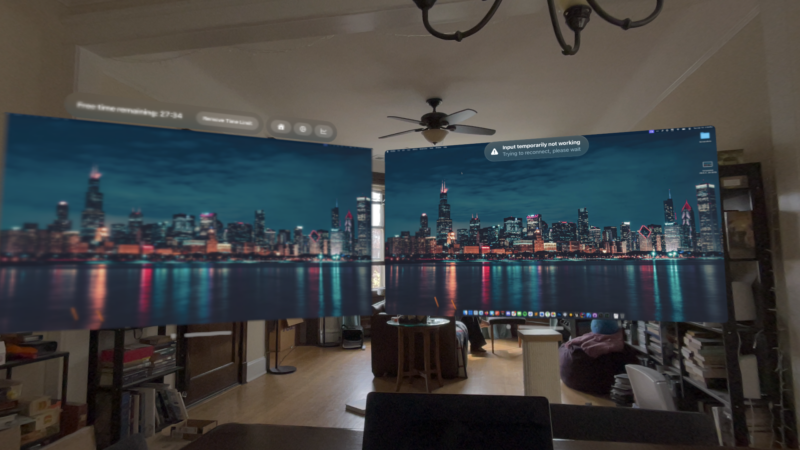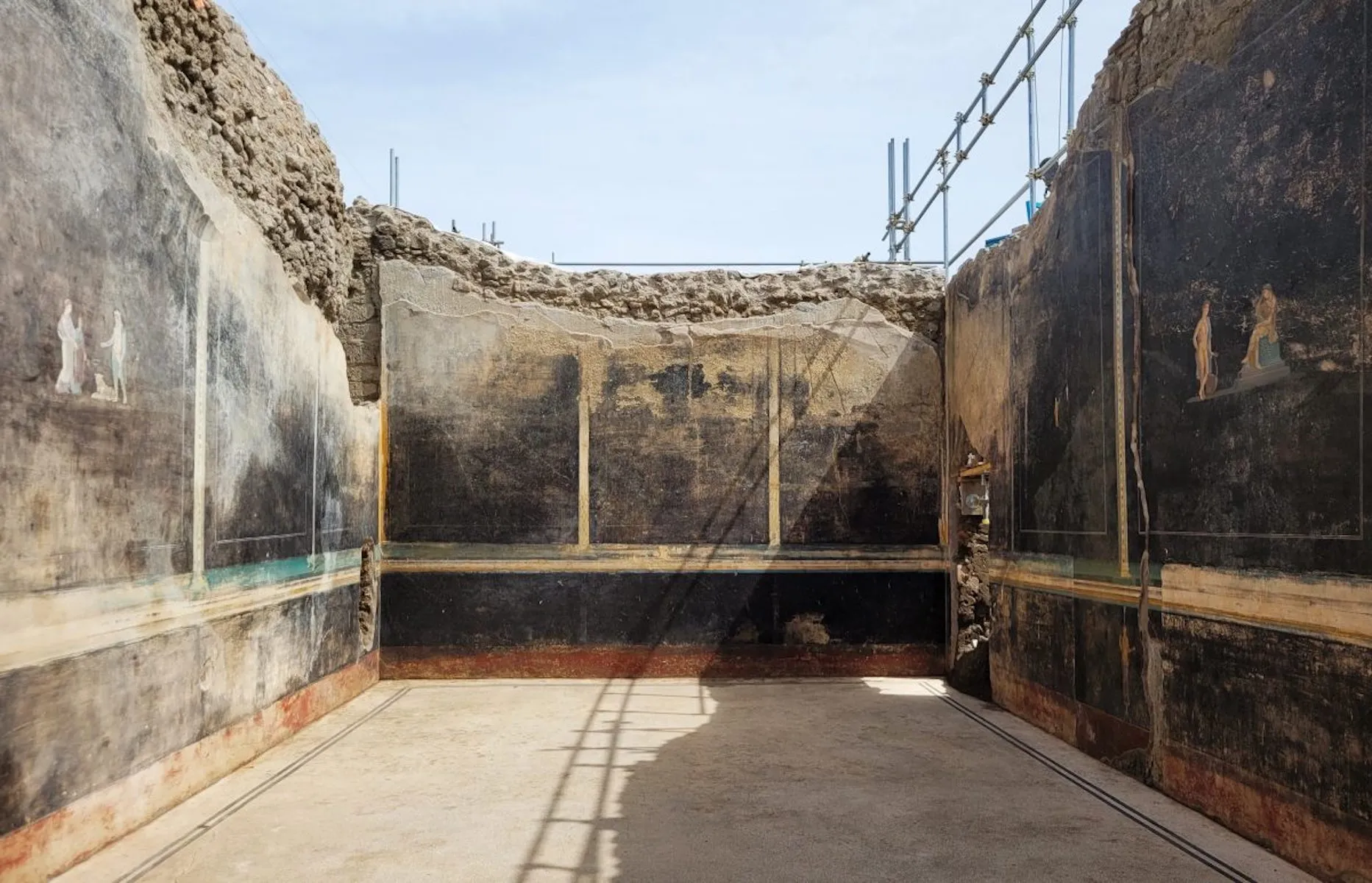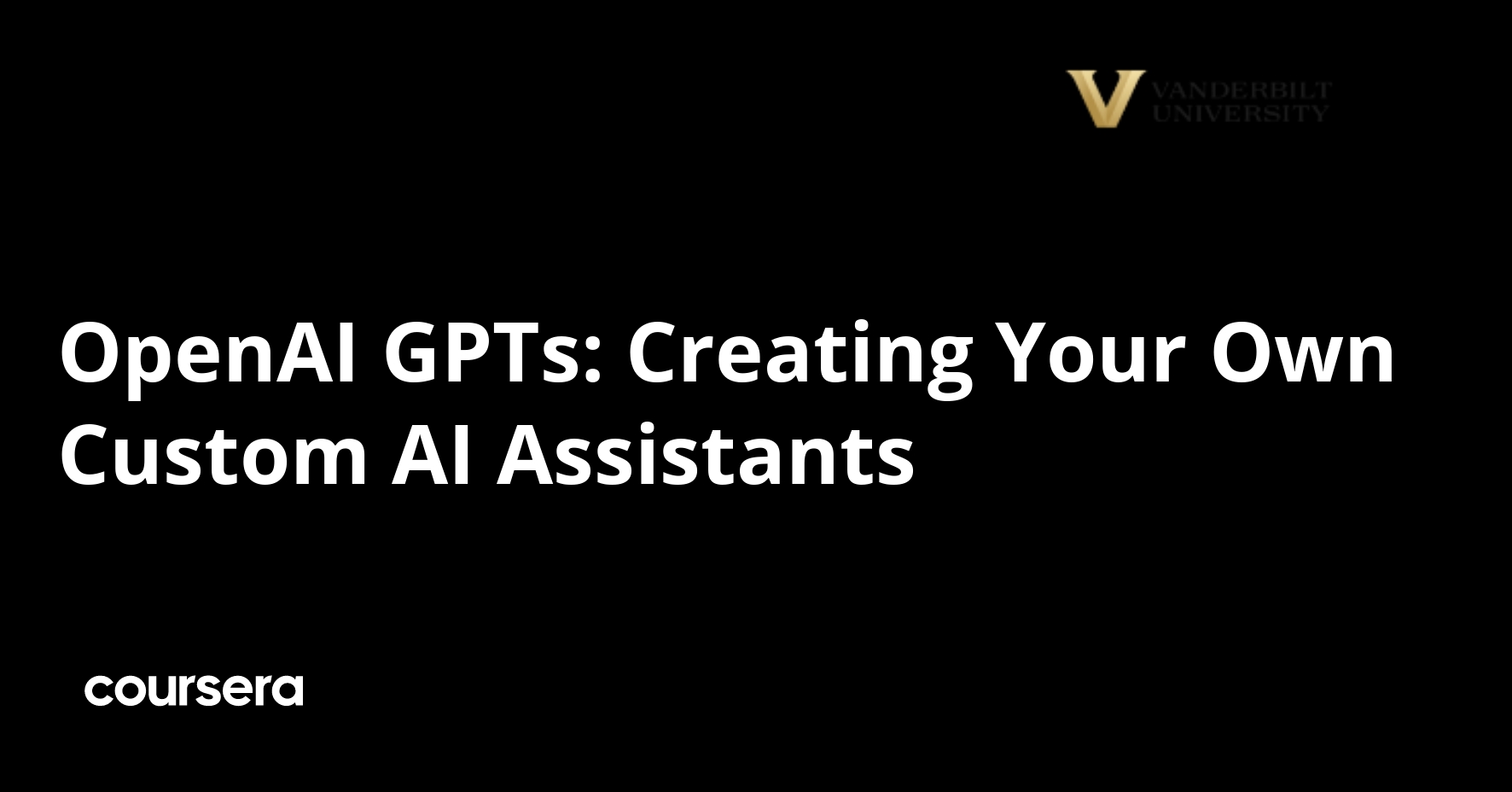U bent hier
Van dingen die voorbijkomen
Blast from the past: Fun with the smear merchants at "Campus Watch" and Daniel Pipes
"We are not a school--we are a hospital with a football team"
Author granted copyright over book with AI-generated text—with a twist

(credit: Getty Images)
Last October, I received an email with a hell of an opening line: “I fired a nuke at the US Copyright Office this morning.”
The message was from Elisa Shupe, a 60-year-old retired US Army veteran who had just filed a copyright registration for a novel she’d recently self-published. She’d used OpenAI's ChatGPT extensively while writing the book. Her application was an attempt to compel the US Copyright Office to overturn its policy on work made with AI, which generally requires would-be copyright holders to exclude machine-generated elements.
The hidden story behind one of SpaceX’s wettest and wildest launches

Enlarge / Is that sooty rocket lifting off with the CRS-3 mission in 2014 a reused booster? No, it is not. (credit: SpaceX)
Ten years ago today, when a Falcon 9 rocket took off from Florida, something strange happened. Dramatically, as the rocket lifted off, a fountain of dirty water splashed upward alongside the vehicle, coating the rocket in grime.
Following the ultimately successful liftoff of this third cargo Dragon mission to the International Space Station, SpaceX founder Elon Musk was asked about the incident during a news conference. He offered a fairly generic answer without going into the details.
"We sprayed a bunch of water all around the pad," Musk said. "Essentially what happened is we splashed dirty water on ourselves. So it’s a little embarrassing, but no harm done."
All the pieces are in place for the first crew flight of Boeing’s Starliner

Enlarge / Technicians inside United Launch Alliance's Vertical Integration Facility connect Boeing's Starliner spacecraft to the top of its Atlas V rocket Tuesday. (credit: United Launch Alliance)
Ground teams on Florida's Space Coast hoisted Boeing's Starliner spacecraft atop its United Launch Alliance Atlas V rocket this week, putting all the pieces in place for liftoff next month with two veteran NASA astronauts on a test flight to the International Space Station.
This will be the first time astronauts fly on Boeing's Starliner crew capsule, following two test flights without crew members in 2019 and 2022. The Starliner Crew Flight Test (CFT) next month will wrap up a decade and a half of development and, if all goes well, will pave the way for operational Starliner missions to ferry crews to and from the space station.
Starliner is running years behind schedule and over budget. SpaceX's Crew Dragon spacecraft has flown all of NASA's crew rotation missions to the station since its first astronaut flight in 2020. But NASA wants to get Boeing's spacecraft up and running to have a backup to SpaceX. It would then alternate between Starliner and Crew Dragon for six-month expeditions to the station beginning next year.
This app tries to do what Apple couldn’t: Multiple Mac monitors on Vision Pro

Enlarge / Here it is: two virtual Mac displays in Vision Pro. (credit: Samuel Axon)
Apple's Vision Pro headset holds the promise to be a powerful extension of your Mac workflow, but the Mac integration it shipped with is just neat, not a big step forward. Now, an app by established independent developers Jordi Bruin, Mathijs Kadijk, and Tom Lokhorst aims to fix that.
Called Splitscreen, it enables you to utilize two virtual displays at once while working with your Mac and wearing Vision Pro. By contrast, Apple's default implementation only supports mirroring a single Mac display to a resizable virtual one.
Further, the developers are working on achieving what I said I'd like to see from Apple when I wrote up my first impressions of the headset: the ability to move individual Mac windows around your space freely like visionOS apps when your Mac and Vision Pro are connected to one another.
When it rains, it pours--and a question about refereeing for journals
OpenAI winds down AI image generator that blew minds and forged friendships in 2022

Enlarge / An AI-generated image from DALL-E 2 created with the prompt "A painting by Grant Wood of an astronaut couple, american gothic style." (credit: AI Pictures That Go Hard / X)
When OpenAI's DALL-E 2 debuted on April 6, 2022, the idea that a computer could create relatively photorealistic images on demand based on just text descriptions caught a lot of people off guard. The launch began an innovative and tumultuous period in AI history, marked by a sense of wonder and a polarizing ethical debate that reverberates in the AI space to this day.
Last week, OpenAI turned off the ability for new customers to purchase generation credits for the web version of DALL-E 2, effectively killing it. From a technological point of view, it's not too surprising that OpenAI recently began winding down support for the service. The 2-year-old image generation model was groundbreaking for its time, but it has since been surpassed by DALL-E 3's higher level of detail, and OpenAI has recently begun rolling out DALL-E 3 editing capabilities.
But for a tight-knit group of artists and tech enthusiasts who were there at the start of DALL-E 2, the service's sunset marks the bittersweet end of a period where AI technology briefly felt like a magical portal to boundless creativity. "The arrival of DALL-E 2 was truly mind-blowing," illustrator Douglas Bonneville told Ars in an interview. "There was an exhilarating sense of unlimited freedom in those first days that we all suspected AI was going to unleash. It felt like a liberation from something into something else, but it was never clear exactly what."
The 2024 Indian Elections: The Strategic Use of Journalism, Social Media, and Internet Governance in a Modi-centric Election
Beautifully-Preserved Frescoes with Figures from the Trojan War Discovered in a Lavish Pompeii Home

Image via Pompeii Archaeological Park
Imagine visiting the home of a prominent, wealthy figure, and at the evening’s end finding yourself in a room dedicated to late-night entertaining, painted entirely black except for a few scenes from antiquity. Perhaps this wouldn’t sound entirely implausible in, say, twenty-first century Silicon Valley. But such places also existed in antiquity itself: or at least one of them did, as recently discovered in Pompeii. Preserved for nearly two millennia now by the ash of Mount Vesuvius, the ruins of that city give us the clearest and most detailed archaeological insights we have into life at the height of the Roman Empire — but even today, a third of the site has yet to be excavated.

That archaeological dig continues apace, and its latest discovery — more recent than the Pompeiian “snack bar” and “pizza” previously featured here on Open Culture — is “a spectacular banqueting room with elegant black walls, decorated with mythological characters and subjects inspired by the Trojan War,” including such mythological characters as Helen, Paris, Cassandra, and Apollo.
(adsbygoogle = window.adsbygoogle || []).push({}); . -->“It provided a refined setting for entertainment during convivial moments, whether banquets or conversations, with the clear aim of pursuing an elegant lifestyle, reflected by the size of the space, the presence of frescoes and mosaics dating to the Third Style.”

Frescoes in that Roman Third Style, explains Hyperallergic’s Rhea Nayyar, feature “small, finely painted figures and subjects that seem to float within monochromatic fields,” designed “to mimic framed works of art or altars through illusions resembling carved beams, shaded pillars, and shining candelabras — all of which were painted on flat walls.”

The color of those walls, in this case, seems to have been chosen to hide the carbon deposits left by oil lamps burning all night long. As reported by BBC Science News, the commissioner of this room, and indeed of the lavish house in which it’s located, may have been Aulus Rustius Verus, a “super-rich” local politician who — assuming decisive archaeological evidence emerges in his favor — also knew how to party.

via Hyperallergic
Related content:
A Newly-Discovered Fresco in Pompeii Reveals a Precursor to Pizza
Take a High Def, Guided Tour of Pompeii
Archaeologists Discover an Ancient Roman Snack Bar in the Ruins of Pompeii
Watch the Destruction of Pompeii by Mount Vesuvius, Re-Created with Computer Animation (79 AD)
Pompeii Rebuilt: A Tour of the Ancient City Before It Was Entombed by Mount Vesuvius
Based in Seoul, Colin Marshall writes and broadcasts on cities, language, and culture. His projects include the Substack newsletter Books on Cities, the book The Stateless City: a Walk through 21st-Century Los Angeles and the video series The City in Cinema. Follow him on Twitter at @colinmarshall or on Facebook.
Creating Your Own Custom AI Assistants Using OpenAI GPTs: A Free Course from Vanderbilt University

Last fall, OpenAI started letting users create custom versions of ChatGPT–ones that would let people create AI assistants to complete tasks in their personal or professional lives. In the months that followed, some users created AI apps that could generate recipes and meals. Others developed GPTs to create logos for their businesses. You get the picture.
If you’re interested in developing your own AI assistant, Vanderbilt computer science professor Jules White has released a free online course called “OpenAI GPTs: Creating Your Own Custom AI Assistants.” On average, the course should take seven hours to complete.
Here’s how he frames the course:
This cutting-edge course will guide you through the exciting journey of creating and deploying custom GPTs that cater to diverse industries and applications. Imagine having a virtual assistant that can tackle complex legal document analysis, streamline supply chain logistics, or even assist in scientific research and hypothesis generation. The possibilities are endless! Throughout the course, you’ll delve into the intricacies of building GPTs that can use your documents to answer questions, patterns to create amazing human and AI interaction, and methods for customizing the tone of your GPTs. You’ll learn how to design and implement rigorous testing scenarios to ensure your AI assistant’s accuracy, reliability, and human-like communication abilities. Prepare to be amazed as you explore real-world examples and case studies, such as:
1. GPT for Personalized Learning and Education: Craft a virtual tutor that adapts its teaching approach based on each student’s learning style, providing personalized lesson plans, interactive exercises, and real-time feedback, transforming the educational landscape.
2. Culinary GPT: Your Personal Recipe Vault and Meal Planning Maestro. Step into a world where your culinary creations come to life with the help of an AI assistant that knows your recipes like the back of its hand. The Culinary GPT is a custom-built language model designed to revolutionize your kitchen experience, serving as a personal recipe vault and meal planning and shopping maestro.
3. GPT for Travel and Business Expense Management: A GPT that can assist with all aspects of travel planning and business expense management. It could help users book flights, hotels, and transportation while adhering to company policies and budgets. Additionally, it could streamline expense reporting and reimbursement processes, ensuring compliance and accuracy.
4. GPT for Marketing and Advertising Campaign Management: Leverage the power of custom GPTs to analyze consumer data, market trends, and campaign performance, generating targeted marketing strategies, personalized messaging, and optimizing ad placement for maximum engagement and return on investment.
You can sign up for the course at no cost here. Or, alternatively, you can elect to pay $49 and receive a certificate at the end.
As a side note, Jules White (the professor) also designed another course previously featured here on OC. It focuses on prompt engineering for ChatPGPT.
Related Content
A New Course Teaches You How to Tap the Powers of ChatGPT and Put It to Work for You
‘Nederlanders mogen gokschulden terugvorderen’
De rechtbank Overijssel heeft besloten dat Unibet een Nederlander zijn gokschulden van ongeveer 8.600 euro moet terugbetalen. Dat meldde Emerce vorige week. Het vonnis zelf is niet direct te vinden: er is alleen een persbericht van de advocaat van de gelukkige gokker. Het lijkt dus een tikje prematuur om te stellen dat iedereen nu zijn geld terug kan krijgen van een illegale goksite, maar er zit meer achter.
De betrokken advocaat doet dit vaker, en met succes. Alle zaken komen min of meer op hetzelfde neer: een Nederlandse consument ging een kansspelovereenkomst aan met een partij die in Nederland geen vergunning heeft. Naar Nederlands recht is zo’n overeenkomst dan nietig/vernietigbaar (strijd met openbare orde, 3:40 BW). Het geld is dan betaald zonder rechtsgrond en moet dan terug.
In al die zaken (lees deze of deze als voorbeeld) zie je dat rechters zich actief sterk maken voor de consument. Het is altijd duidelijk zat dat die sites zich (ook) richten op Nederland, de forumkeuzebedingen gaan linea recta de prullenbank in en ik zie zelfs “litigation bullying” als verwijst naar de goksites als die al te veel processtappen nemen.
De meeste vonnissen zijn tussenvonnissen om punten zoals bevoegdheid of gebondenheid aan Nederland uit te maken. Er zijn ook een paar uitspraken die wel eindvonnis zijn, zoals deze met als terug te betalen bedrag € 128.415,76, dus de nettoschuld die de consument nog had als je zijn winsten van de inleg afhaalt. In deze zaak ging het om € 93.210,71 en dat zijn forse bedragen.
En ja, dit is te verhalen: het casino zit op Curaçao, dat is gewoon deel van hetzelfde Koninkrijk als Nederland. Ook bij een casino in zeg Malta (waar er veel online gevestigd zijn) is dat mogelijk, vanwege Europese regels over tenuitvoerlegging. De enige vraag is of de deurwaarder een bankrekening kunt vinden waar het geld op staat.
Arnoud
Het bericht ‘Nederlanders mogen gokschulden terugvorderen’ verscheen eerst op Ius Mentis.
Life-threatening rat pee infections reach record levels in NYC

Enlarge / A rat looks for food while on a subway platform at the Columbus Circle - 59th Street station on May 8, 2023, in New York City. (credit: Getty | Gary Hershorn)
A life-threatening bacterial infection typically spread through rat urine sickened a record number of people in New York City last year—and this year looks on track for another all-time high, the NYC Department of Health and Mental Hygiene reports.
The infection is leptospirosis, which can cause a range of symptoms, including non-specific ones like fever, headache, chills, muscle aches, vomiting, diarrhea, and cough. But, if left untreated, can become severe, causing kidney failure, liver damage, jaundice, hemorrhage, bloody eyes (conjunctival suffusion), respiratory distress, and potentially death.
The bacteria that causes it—spirochete bacteria of the genus Leptospira—infect rats, which shed the bacteria in their urine. The germs jump to people through direct contact with open wounds or mucous membranes.
Kremlin-backed actors spread disinformation ahead of US elections

Enlarge (credit: da-kuk/Getty)
Kremlin-backed actors have stepped up efforts to interfere with the US presidential election by planting disinformation and false narratives on social media and fake news sites, analysts with Microsoft reported Wednesday.
The analysts have identified several unique influence-peddling groups affiliated with the Russian government seeking to influence the election outcome, with the objective in large part to reduce US support of Ukraine and sow domestic infighting. These groups have so far been less active during the current election cycle than they were during previous ones, likely because of a less contested primary season.
Stoking divisionsOver the past 45 days, the groups have seeded a growing number of social media posts and fake news articles that attempt to foment opposition to US support of Ukraine and stoke divisions over hot-button issues such as election fraud. The influence campaigns also promote questions about President Biden’s mental health and corrupt judges. In all, Microsoft has tracked scores of such operations in recent weeks.
Boston Dynamics’ new humanoid moves like no robot you’ve ever seen

Enlarge / The new, all-electric Atlas. (credit: Boston Dynamics)
The humanoid robotics market is starting to heat up, and the company that's been doing this the longest isn't going to sit by and watch. Boston Dynamics has a new humanoid robot that the company says represents a path to commercialization. It's the company's next-generation, all-electric "Atlas" robot.
While new Atlas and old Atlas share a name, they couldn't be more different when it comes to construction. The old Atlas—a research platform and viral sensation that could handle nearly any terrain, do backflips, and pick up heavy objects—was powered by a heavy, complicated hydraulics system. The new Atlas is all-electric and looks like it's a fraction of the size and weight of the hydraulic version. It also looks like a product, with covers around all the major components and consumer-friendly design touches like a giant status light in the head and a light-up power button that looks like it was ripped right from the Spot assembly line.
Hydraulic Atlas is being retired to make way for the all-electric version. The company posted one last goodbye video for the hydraulic model on its YouTube page, showing the history of the project. Atlas has done a lot of neat tricks over the years, but getting there has required a lot of learning—part of that is taking some absolutely gnarly slams, which are highlighted in the video. The video seemed to go out of its way to show just how cumbersome hydraulics can be. At one point, it looks like Atlas' foot completely breaks off, and hydraulic fluid gushes all over the floor. Other times, the robot just springs a leak, and a fine mist of high-pressure fluid sprays everywhere as the robot goes limp. The fluid has a red tinge to it, so with a little imagination, it can look pretty gory!
Feds appoint “AI doomer” to run US AI safety institute

Enlarge (credit: Bill Oxford | iStock / Getty Images Plus)
The US AI Safety Institute—part of the National Institute of Standards and Technology (NIST)—has finally announced its leadership team after much speculation.
Appointed as head of AI safety is Paul Christiano, a former OpenAI researcher who pioneered a foundational AI safety technique called reinforcement learning from human feedback (RLHF), but is also known for predicting that "there's a 50 percent chance AI development could end in 'doom.'" While Christiano's research background is impressive, some fear that by appointing a so-called "AI doomer," NIST may be risking encouraging non-scientific thinking that many critics view as sheer speculation.
There have been rumors that NIST staffers oppose the hiring. A controversial VentureBeat report last month cited two anonymous sources claiming that, seemingly because of Christiano's so-called "AI doomer" views, NIST staffers were "revolting." Some staff members and scientists allegedly threatened to resign, VentureBeat reported, fearing "that Christiano’s association" with effective altruism and "longtermism could compromise the institute’s objectivity and integrity."
Billions of public Discord messages may be sold through a scraping service

Enlarge (credit: Getty Images)
It's easy to get the impression that Discord chat messages are ephemeral, especially across different public servers, where lines fly upward at a near-unreadable pace. But someone claims to be catching and compiling that data and is offering packages that can track more than 600 million users across more than 14,000 servers.
Joseph Cox at 404 Media confirmed that Spy Pet, a service that sells access to a database of purportedly 3 billion Discord messages, offers data "credits" to customers who pay in bitcoin, ethereum, or other cryptocurrency. Searching individual users will reveal the servers that Spy Pet can track them across, a raw and exportable table of their messages, and connected accounts, such as GitHub. Ominously, Spy Pet lists more than 86,000 other servers in which it has "no bots," but "we know it exists."
-

An example of Spy Pet's service from its website. Shown are a user's nicknames, connected accounts, banner image, server memberships, and messages across those servers tracked by Spy Pet. [credit: Spy Pet ]
As Cox notes, Discord doesn't make messages inside server channels, like blog posts or unlocked social media feeds, easy to publicly access and search. But many Discord users many not expect their messages, server memberships, bans, or other data to be grabbed by a bot, compiled, and sold to anybody wishing to pin them all on a particular user. 404 Media confirmed the service's function with multiple user examples. Private messages are not mentioned by Spy Pet and are presumably still secure.
Bodies found in Neolithic pit were likely victims of ritualistic murder

Enlarge / Three female skeletons found in a Neolithic storage pit in France show signs of ritualistic human sacrifice. (credit: . Beeching/Ludes et al., 2024)
Archaeologists have discovered the remains of two women in a Neolithic tomb in France, with the positioning of the bodies suggesting they may have been ritualistically murdered by asphyxia or self-strangulation, according to a recent paper published in the journal Science Advances.
(WARNING: graphic descriptions below.)
France's Rhône Valley is home to several archaeological sites dating to the end of the Middle Neolithic period (between 4250 and 3600/3500 BCE in the region); the sites include various storage silos, broken grindstones, imported ceramics, animal remains (both from communal meals and sacrifices), and human remains deposited in sepulchral pits. Saint-Paul-Trois-Châteaux is one such site.
Climate damages by 2050 will be 6 times the cost of limiting warming to 2°

Enlarge (credit: Frame Studio)
Almost from the start, arguments about mitigating climate change have included an element of cost-benefit analysis: Would it cost more to move the world off fossil fuels than it would to simply try to adapt to a changing world? A strong consensus has built that the answer to the question is a clear no, capped off by a Nobel in Economics given to one of the people whose work was key to building that consensus.
While most academics may have considered the argument put to rest, it has enjoyed an extended life in the political sphere. Large unknowns remain about both the costs and benefits, which depend in part on the remaining uncertainties in climate science and in part on the assumptions baked into economic models.
In Wednesday's edition of Nature, a small team of researchers analyzed how local economies have responded to the last 40 years of warming and projected those effects forward to 2050. They find that we're already committed to warming that will see the growth of the global economy undercut by 20 percent. That places the cost of even a limited period of climate change at roughly six times the estimated price of putting the world on a path to limit the warming to 2° C.







































































































![Reference manager - [Onderhoud aantekeningen]](https://labyrinth.rienkjonker.nl/sites/default/files/styles/medium/public/Reference%20manager%20v3%20-%20%5BOnderhoud%20aantekeningen%5D%2014-2-2010%20102617_0.jpg?itok=OJkkWhxY)
![Reference manager - [Onderhoud aantekeningen]](https://labyrinth.rienkjonker.nl/sites/default/files/styles/medium/public/Reference%20manager%20v3%20-%20%5BOnderhoud%20aantekeningen%5D%2014-2-2010%20102628.jpg?itok=CUvhRRr7)
![Reference manager - [Onderhoud bronnen] - Opnemen en onderhouden](https://labyrinth.rienkjonker.nl/sites/default/files/styles/medium/public/Reference%20manager%20v3%20-%20%5BOnderhoud%20bronnen%5D%2014-2-2010%20102418.jpg?itok=d7rnOhhK)
![Reference manager - [Onderhoud bronnen]](https://labyrinth.rienkjonker.nl/sites/default/files/styles/medium/public/Reference%20manager%20v3%20-%20%5BOnderhoud%20bronnen%5D%2014-2-2010%20102433.jpg?itok=CgS8R6cS)
![Reference manager - [Onderhoud bronnen]](https://labyrinth.rienkjonker.nl/sites/default/files/styles/medium/public/Reference%20manager%20v3%20-%20%5BOnderhoud%20bronnen%5D%2014-2-2010%20102445_0.jpg?itok=4oJ07yFZ)
![Reference manager - [Onderhoud bronnen]](https://labyrinth.rienkjonker.nl/sites/default/files/styles/medium/public/Reference%20manager%20v3%20-%20%5BOnderhoud%20bronnen%5D%2014-2-2010%20102500.jpg?itok=ExHJRjAO)
![Reference manager - [Onderhoud bronnen]](https://labyrinth.rienkjonker.nl/sites/default/files/styles/medium/public/Reference%20manager%20v3%20-%20%5BOnderhoud%20bronnen%5D%2014-2-2010%20102524.jpg?itok=IeHaYl_M)
![Reference manager - [Onderhoud bronnen]](https://labyrinth.rienkjonker.nl/sites/default/files/styles/medium/public/Reference%20manager%20v3%20-%20%5BOnderhoud%20bronnen%5D%2014-2-2010%20102534.jpg?itok=cdKP4u3I)
![Reference manager - [Onderhoud thema's en rubrieken]](https://labyrinth.rienkjonker.nl/sites/default/files/styles/medium/public/Reference%20manager%20v3%20-%20%5BOnderhoud%20themas%20en%20rubrieken%5D%2020-9-2009%20185626.jpg?itok=zM5uJ2Sf)













![Reference manager - [Raadplegen aantekeningen]](https://labyrinth.rienkjonker.nl/sites/default/files/styles/medium/public/Reference%20manager%20v3%20-%20%5BRaadplegen%20aantekeningen%5D%2020-9-2009%20185612.jpg?itok=RnX2qguF)
![Reference manager - [Relatie termen (thesaurus)]](https://labyrinth.rienkjonker.nl/sites/default/files/styles/medium/public/Reference%20manager%20v3%20-%20%5BRelatie%20termen%20%28thesaurus%29%5D%2014-2-2010%20102751.jpg?itok=SmxubGMD)
![Reference manager - [Thesaurus raadplegen]](https://labyrinth.rienkjonker.nl/sites/default/files/styles/medium/public/Reference%20manager%20v3%20-%20%5BThesaurus%20raadplegen%5D%2014-2-2010%20102732.jpg?itok=FWvNcckL)
![Reference manager - [Zoek thema en rubrieken]](https://labyrinth.rienkjonker.nl/sites/default/files/styles/medium/public/Reference%20manager%20v3%20-%20%5BZoek%20thema%20en%20rubrieken%5D%2020-9-2009%20185546.jpg?itok=6sUOZbvL)
![Reference manager - [Onderhoud rubrieken]](https://labyrinth.rienkjonker.nl/sites/default/files/styles/medium/public/Reference%20manager%20v3%2020-9-2009%20185634.jpg?itok=oZ8RFfVI)

![Reference manager - [Onderhoud aantekeningen]](https://labyrinth.rienkjonker.nl/sites/default/files/styles/medium/public/Reference%20manager%20v3%20-%20%5BOnderhoud%20aantekeningen%5D%2014-2-2010%20102603.jpg?itok=XMMJmuWz)


































































